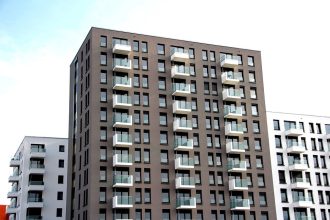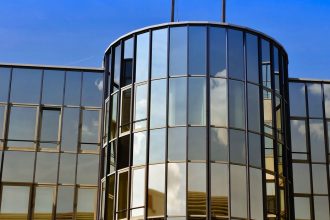Building a Greener Tomorrow: Innovative Approaches to Eco-Friendly Construction and Sustainable Real Estate Development
As we face the pressing realities of climate change, resource scarcity, and urbanization, the construction and real estate industries are under increasing scrutiny to adopt more sustainable practices. The movement toward eco-friendly construction is evolving rapidly, guided by principles that prioritize environmental stewardship, social equity, and economic viability. This post delves into innovative practices in green building design and highlights initiatives like the Living Building Challenge (LBC) that are shaping the future of sustainable real estate development.
What is Eco-Friendly Construction?
Eco-friendly construction refers to a building process that reduces negative impacts on the environment while promoting health, safety, and resource efficiency throughout a building’s lifecycle – from design and construction to operation, maintenance, and renovation. This approach encompasses multiple strategies, including sustainable material sourcing, energy efficiency, water conservation, waste reduction, and fostering biodiversity.
Innovative Practices in Green Building Design
1. Biophilic Design
Biophilic design focuses on integrating natural elements into building architecture. This approach enhances occupants’ well-being by reducing stress and improving productivity. Features such as living walls, natural ventilation, abundant daylight, and outdoor green spaces are common in biophilic designs.
Example: The Bosco Verticale (Vertical Forest) in Milan, Italy, consists of two residential towers adorned with over 9,000 trees, 20,000 shrubs, and 11,000 plants. This innovative approach not only improves air quality but also provides habitat for various species within an urban environment.
2. Passive Solar Design
Passive solar design harnesses natural sunlight to maintain comfortable indoor temperatures, reducing reliance on artificial heating and cooling systems. This is achieved through strategic building orientation, thermal mass materials, insulation, and operable windows.
Example: The David and Lucile Packard Foundation Headquarters in California employs passive solar design principles, resulting in significant energy savings and an LEED Platinum certification.
3. Waste Reduction through Modular Construction
Modular construction involves pre-fabricating building components off-site and assembling them on-site, reducing construction waste and time. This method leads to increased efficiency, lower costs, and a minimized environmental footprint.
Example: The B2 Tower in Brooklyn, New York, is one of the tallest wooden structures in the U.S. and utilizes modular construction techniques. The project reduces carbon emissions while maintaining a tight construction schedule.
4. Sustainable Materials and Circular Economy
Using sustainable materials—such as reclaimed wood, recycled metals, and low-VOC paints—reduces the environmental impact of construction. Furthermore, the circular economy approach focuses on designing buildings that can be disassembled at the end of their lifecycle, allowing materials to be reused or recycled.
Example: The Green Building at the University of Massachusetts Amherst employs reclaimed timber and recycled materials, minimizing its environmental footprint and earning a LEED Gold certification.
Living Building Challenge: A Model for Sustainable Design
The Living Building Challenge (LBC), administered by the International Living Future Institute, is widely regarded as the most rigorous sustainable building certification program in the world. To achieve LBC certification, a building must meet a series of ideal performance benchmarks over 12 months, including:
- Net Positive Energy: Buildings must generate more energy than they consume.
- Net Positive Water: Water needs must be met through rainwater or other sustainable sources, and all water should be treated and returned to the environment clean.
- Materials Petal: Buildings must avoid toxic materials and support local and sustainable materials sourcing.
- Equity and Beauty: The design must elevate the human experience and promote social equity.
Example: The Trophy Building in Portland, Oregon, is the first building in the U.S. to achieve LBC certification. It uses on-site solar panels, rainwater harvesting systems, and non-toxic materials to create a truly sustainable living space.
Conclusion: The Future of Green Construction
The innovative practices in eco-friendly construction not only address the urgent need for sustainable development but also inspire creativity and a reconceptualization of our built environment. As regulatory frameworks evolve and public awareness increases, sustainable real estate development will likely become the norm rather than the exception.
From biophilic design to the principles laid out by the Living Building Challenge, the future of construction is poised to be more harmonious with nature, fostering healthier, more resilient communities. Collaboration among architects, builders, real estate developers, and policymakers will be essential in promoting these practices and realizing a greener tomorrow.
References
- International Living Future Institute. (n.d.). Living Building Challenge. Retrieved from living-future.org
- Gifford, R. (2014). Biophilic Design and Human Behavior.
- Henn, A. (2010). Sustainable Building Materials: The Role of Design, Construction, and Quality Assessment.
- Rother, C. (2012). Modular Construction: A Solution to Diminishing Resources and Sustainability.
This synthesis not only provides a rich overview of sustainable practices in construction but also invites readers to consider their role in advocating for environmentally responsible building methods.







